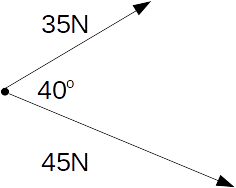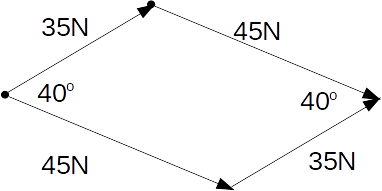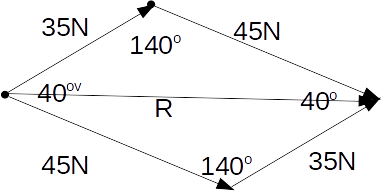To find the resultant of two forces acting at a point, construct a parallelogram with the forces as the sides of the parallelogram. The resultant will be a diagonal of the parallelogram.
Example: Find the resultant of the two forces illustrated in the diagram.

First construct the parallelogram.

The resultant is the diagonal shown.

We can find the diagonal using the Cosine Rule. We get
\[R^2=35^2+45^2-2 \times 35 \times 45 \times cos140^o=6063 \]
\[R=77.87N\]
to 2 decimal places.





